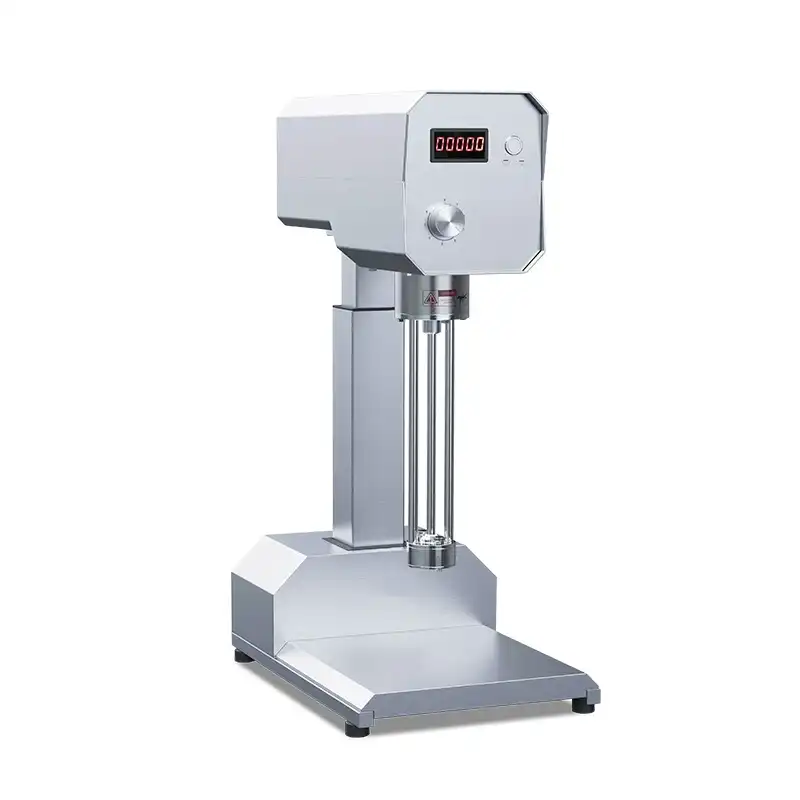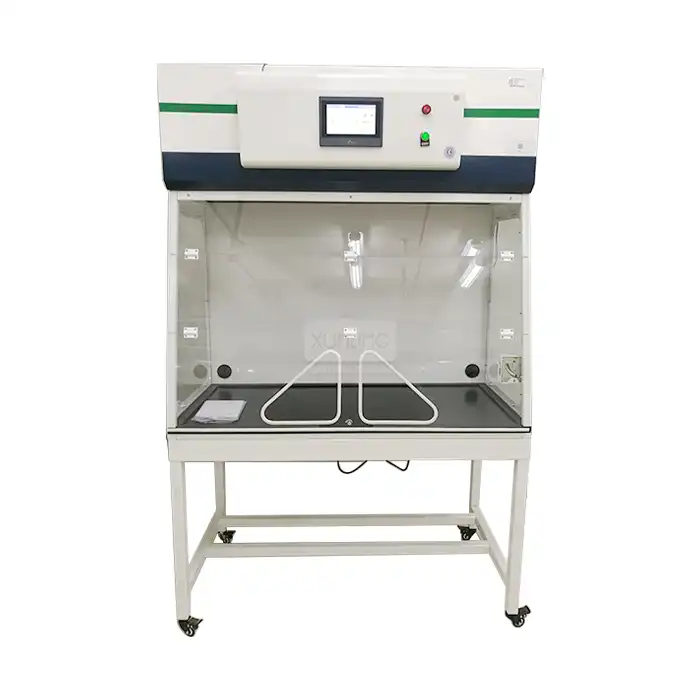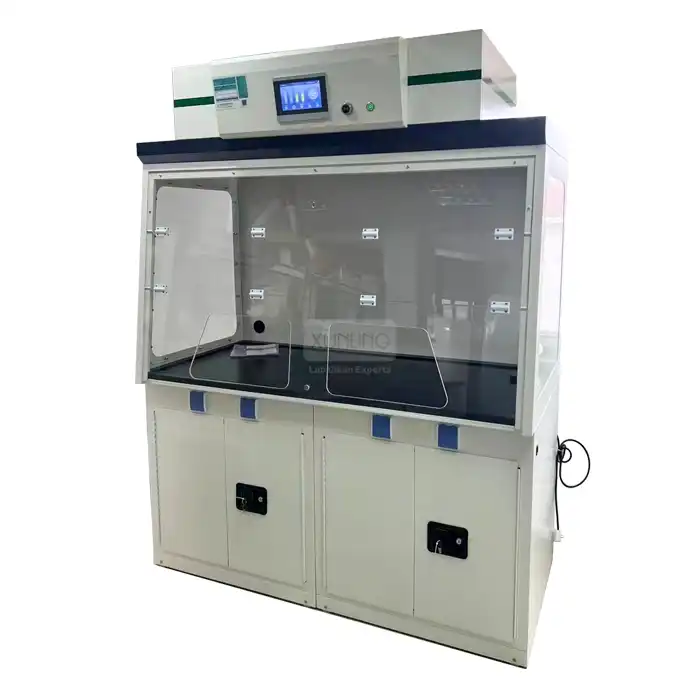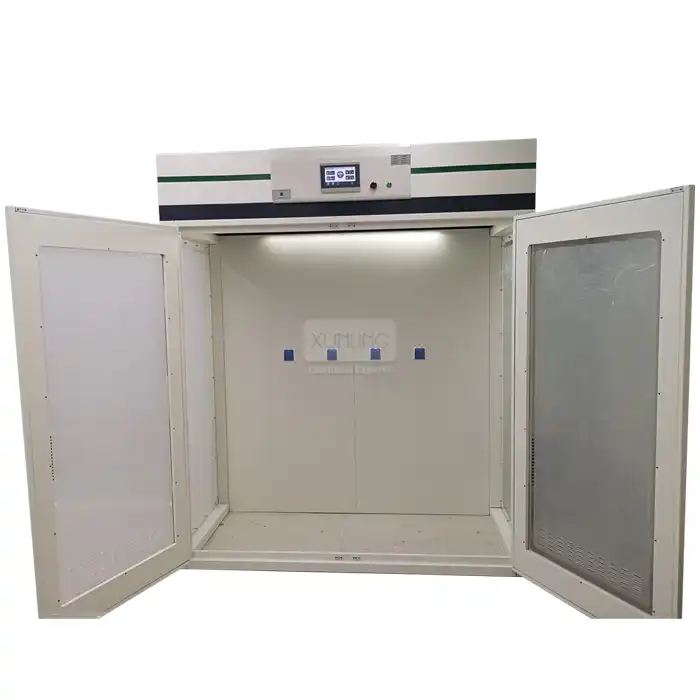
Are there different types of small fume hoods?
2025-07-14 18:08:13
Small Fume Hoods are essential laboratory safety equipment designed to protect personnel from harmful vapors, gases, and particulates during scientific procedures. Indeed, there are several distinct types of small fume hoods available in today's market, each engineered to address specific laboratory requirements and spatial constraints. These compact ventilation systems vary in design, functionality, airflow mechanisms, filtration capabilities, and application suitability. Understanding the differences between conventional ducted small fume hoods, ductless filtration models, and specialized portable units is crucial for laboratory managers seeking to optimize both safety protocols and workspace efficiency while managing budget considerations.

Types of Small Fume Hoods Based on Ventilation System
Small fume hoods can be categorized primarily based on their ventilation systems, with each type offering unique advantages for different laboratory setups and requirements.
Ducted Small Fume Hoods
Ducted small fume hoods represent the traditional approach to laboratory ventilation safety. These systems connect directly to building exhaust infrastructure, efficiently channeling hazardous fumes outside the facility through dedicated ductwork. Despite their compact size, ducted small fume hoods maintain exceptional containment capabilities by creating negative pressure environments that prevent contaminant escape. The primary advantage of ducted small fume hood systems lies in their versatility for handling diverse chemical applications without filtration limitations.
Made from high-quality, corrosion-resistant steel, these units withstand aggressive chemical environments while providing consistent protection. Xi'an Xunling Electronic Technology's ducted small fume hoods incorporate variable air volume (VAV) or constant air volume (CAV) airflow systems, allowing laboratories to optimize energy consumption while maintaining rigorous safety standards. The vertical foldable window design enhances operator accessibility while preserving containment integrity. Each unit comes equipped with LED illumination systems that provide excellent visibility without compromising safety, and digital control panels that display crucial operational parameters with integrated safety alerts for optimal protection.
These small fume hoods comply with international safety standards including ISO, CE, and NFPA regulations, ensuring that laboratory operations meet global compliance requirements. While more installation-intensive than ductless alternatives, ducted small fume hoods remain the gold standard for laboratories regularly working with highly hazardous substances or requiring maximum protection levels in compact spaces.
Ductless Filtration Fume Hoods
Ductless filtration small fume hoods offer exceptional flexibility for laboratories with installation constraints or frequently changing layouts. These self-contained units purify contaminated air through advanced filtration media before recirculating clean air back into the laboratory space. The defining characteristic of ductless small fume hood systems is their independence from building infrastructure, operating as standalone units requiring only electrical connections for immediate deployment.
Xi'an Xunling Electronic Technology's ductless small fume hoods feature sophisticated filtration systems incorporating HEPA filters for particulate removal alongside specialized activated carbon modules designed for specific chemical families. This customizable filtration approach enables effective handling of acids, alkalis, organic solvents, ammonia, formaldehyde, and fine particulates without external ventilation requirements. The polypropylene construction options provide superior chemical resistance for particularly corrosive applications, while maintaining the compact footprint necessary for space-constrained laboratories.
The plug-and-play installation capability makes these small fume hoods particularly valuable for temporary research projects, educational settings, or facilities without existing ventilation infrastructure. While requiring regular filter monitoring and replacement, ductless small fume hoods significantly reduce facility modification costs while maintaining operator protection. The low-noise operation makes these units ideal for instructional environments where communication clarity remains essential alongside safety considerations. For laboratories with diverse but intermittent chemical usage patterns, these adaptable systems provide cost-effective protection while maximizing space utilization.
Portable Small Fume Hoods
Portable small fume hoods represent the ultimate solution for laboratories requiring ventilation flexibility across multiple workstations or facilities. These highly mobile units typically incorporate ductless filtration technology within an exceptionally compact design that enables transportation between different operating locations. Their defining characteristic is the combination of comprehensive protection capabilities with mobility features like casters, lightweight construction, and minimal footprint dimensions.
Xi'an Xunling's portable small fume hood models emphasize ergonomic design while maintaining rigorous safety standards. These units provide effective control of harmful gases, vapors, and dust in various settings while allowing laboratories to deploy protection precisely where needed without duplicating equipment investments. The corrosion-resistant materials ensure durability during transport and relocation, while digital monitoring systems maintain consistent performance documentation across different usage environments.
These small fume hoods excel in multi-disciplinary research facilities, educational laboratories with shared equipment resources, field research applications, and temporary testing locations. Their compact design maximizes space efficiency while providing essential operator protection from hazardous substances. While offering somewhat reduced workspace compared to permanent installations, portable small fume hoods deliver remarkable containment efficiency for their size category. The adaptability of these systems to different laboratory layouts makes them invaluable for facilities undergoing renovations or organizations with evolving research priorities requiring flexible safety infrastructure.

Small Fume Hood Applications Across Different Industries
Small fume hoods find diverse applications across various sectors, with each industry having specific requirements and preferences for these essential safety devices.
Pharmaceutical and Biotech Applications
In pharmaceutical and biotech laboratories, small fume hoods play a critical role in safeguarding researchers during drug development and testing procedures. These compact containment systems enable precise handling of potent active pharmaceutical ingredients, volatile organic compounds, and potentially pathogenic materials within space-constrained research environments. Small fume hood installations in pharmaceutical settings prioritize exceptional containment efficiency alongside precise airflow control to protect both personnel and sensitive materials.
Xi'an Xunling Electronic Technology's small fume hoods for pharmaceutical applications incorporate features specifically designed for compliance with strict industry regulations. The high-efficiency filtration systems ensure safe gas emissions while preventing cross-contamination between different research processes. The corrosion-resistant construction withstands exposure to various chemical environments commonly encountered in pharmaceutical research and production. These small fume hoods enhance safety and minimize occupational health risks associated with handling reactive compounds and biological materials.
Pharmaceutical manufacturers particularly value the compact, space-saving design of small fume hoods that can be strategically positioned within multi-function laboratories. The adaptability to different laboratory layouts allows research teams to reconfigure workspaces as project requirements evolve. For quality control testing, stability studies, and formulation development, these small fume hoods provide consistent protection while maintaining the controlled environment necessary for accurate analytical results. The digital display control panels with safety alerts ensure that operators receive immediate notification of any ventilation irregularities that might compromise protection or product integrity.
Academic and Research Laboratory Uses
Academic and research institutions benefit tremendously from small fume hood technology that balances educational accessibility with rigorous safety protection. University and research laboratories often face significant space constraints while needing to accommodate multiple student workstations or diverse research activities. Small fume hoods provide the ideal solution by delivering professional-grade protection within teaching-friendly dimensions.
Xi'an Xunling's small fume hoods designed for educational settings feature transparent side panels to enhance visibility during demonstrations while maintaining containment effectiveness. These units protect students and researchers from hazardous exposure while providing excellent visibility for instructional purposes. The low-noise operation ensures clear communication during laboratory teaching sessions without compromising ventilation effectiveness. For undergraduate teaching laboratories, these small fume hoods allow more workstations within limited floor space, maximizing student access to hands-on learning experiences.
Research laboratories particularly appreciate the flexibility of small fume hoods that can be dedicated to specific protocols or analytical procedures without consuming excessive laboratory real estate. Graduate research projects often involve specialized procedures requiring dedicated containment solutions that small fume hoods perfectly address. The combination of space efficiency with professional-grade protection makes these units ideal for institutions balancing advanced research capabilities with instructional responsibilities. Additionally, the competitive pricing of Xi'an Xunling's small fume hoods allows academic institutions to maintain high safety standards while managing tight budgetary constraints.
Industrial Quality Control Laboratories
Industrial quality control laboratories employ small fume hoods for a wide range of analytical procedures requiring precise environmental control alongside operator protection. These specialized testing facilities often perform repetitive procedures on production samples containing various chemical components that require containment. Small fume hoods provide the ideal balance of accessibility and protection for routine testing protocols while conserving valuable laboratory space.
Xi'an Xunling Electronic Technology's industrial small fume hoods feature durable construction capable of withstanding continuous operational demands in high-throughput testing environments. The corrosion-resistant materials ensure longevity even when regularly exposed to aggressive test reagents common in quality control applications. These small fume hoods comply with international safety standards while providing the reliability necessary for consistent analytical results in industrial settings.
Quality control managers particularly value the cost-effectiveness of these compact ventilation solutions that deliver professional protection without requiring extensive facility modifications. The small fume hood's adaptability to different laboratory layouts allows QC departments to optimize workflow efficiency while maintaining strict safety protocols. For industries ranging from chemical manufacturing to consumer products testing, these efficient containment systems protect technicians during sample preparation, extraction procedures, and analytical testing. The digital monitoring capabilities ensure consistent performance documentation for regulatory compliance purposes while the low-noise operation contributes to improved concentration and reduced operator fatigue during extended testing sessions.
Technical Considerations When Selecting Small Fume Hoods
Selecting the appropriate small fume hood requires careful evaluation of several technical factors beyond simply choosing between ducted and ductless models.
Face Velocity and Airflow Dynamics
Face velocity—the speed of air entering a fume hood's opening—represents a critical performance parameter for small fume hoods that directly impacts containment effectiveness. The compact dimensions of small fume hoods require particularly careful engineering to maintain optimal face velocity across the reduced opening area. Industry standards typically recommend face velocities between 80-120 feet per minute (0.4-0.6 m/s) to achieve effective containment without creating turbulence that might compromise performance.
Xi'an Xunling Electronic Technology's small fume hoods implement sophisticated airflow engineering that ensures consistent face velocity even under variable operating conditions. The precision-engineered airfoil designs at critical boundaries minimize turbulence while maximizing capture efficiency within the compact workspace. These small fume hoods incorporate variable air volume (VAV) or constant air volume (CAV) systems that automatically adjust to maintain optimal protection levels despite changing operating conditions.
The digital monitoring systems continuously verify face velocity parameters, providing operators with real-time feedback on containment effectiveness. For small fume hoods with restricted dimensions, maintaining appropriate airflow patterns becomes increasingly critical to prevent dead zones or reverse flows that might compromise protection. Xi'an Xunling's engineering team applies computational fluid dynamics modeling during design phases to optimize airflow characteristics specifically for compact enclosures. This technical attention to airflow dynamics ensures that even with reduced physical dimensions, these small fume hoods deliver full-scale protection capabilities through precisely controlled ventilation parameters.
Materials and Chemical Compatibility
Material selection represents a fundamental consideration when choosing small fume hoods for specific laboratory applications, as compatibility with anticipated chemicals directly impacts both safety and equipment longevity. The compact nature of small fume hoods often means closer proximity between corrosive substances and structural components, amplifying the importance of appropriate material specifications.
Xi'an Xunling Electronic Technology manufactures small fume hoods using high-quality, corrosion-resistant steel for applications involving moderate chemical exposure, while offering specialized polypropylene construction for laboratories working with particularly aggressive reagents. These material choices ensure durability across diverse chemical environments while maintaining structural integrity despite repeated exposure. The interior surfaces feature chemical-resistant coatings designed to facilitate decontamination while resisting degradation from common laboratory chemicals.
For laboratories handling hydrofluoric acid or concentrated mineral acids, specialized small fume hood models incorporate enhanced material protections including fluoropolymer components in critical exposure areas. The construction materials extend beyond visible surfaces to include gaskets, sashes, and airflow components that might contact chemical vapors during normal operation. By matching small fume hood materials precisely to anticipated chemical exposures, laboratories can maximize equipment lifespan while ensuring consistent protection capabilities throughout the operational lifecycle. The material selection process should include consideration of both routine procedures and potential accident scenarios to ensure comprehensive compatibility under all foreseeable conditions.
Energy Efficiency and Operational Costs
Energy consumption represents a significant consideration when evaluating small fume hood options, particularly for facilities with multiple units or continuous operation requirements. While compact in size, small fume hoods still process substantial air volumes during operation, with corresponding energy implications for both the equipment itself and associated HVAC systems supporting laboratory environments.
Xi'an Xunling's small fume hood designs incorporate numerous energy-efficient features including precisely calibrated motors, low-resistance airflow paths, and intelligent control systems that optimize performance while minimizing power consumption. The VAV systems automatically reduce airflow during periods of non-use while maintaining safe standby conditions, significantly reducing operational costs compared to constant-volume alternatives. These small fume hoods utilize LED illumination systems that provide excellent workspace visibility while consuming minimal power and generating less heat than conventional lighting options.
For ducted small fume hood installations, the reduced air volume requirements compared to full-sized models translate directly into decreased HVAC demands and associated energy savings. The compact dimensions minimize the conditioned air volume exhausted from facilities, reducing heating and cooling loads on building systems. Ductless small fume hood models offer even greater energy advantages by recirculating filtered air rather than exhausting conditioned air entirely. When evaluating total operational costs, laboratories should consider both direct energy consumption and these indirect HVAC impacts alongside initial purchase price. The long-term energy efficiency of Xi'an Xunling's small fume hoods delivers substantial cost savings over equipment lifespans, particularly in facilities operating multiple units or maintaining extended operational schedules.
Conclusion
Small fume hoods represent a diverse category of laboratory safety equipment offering specialized solutions for different ventilation requirements, spatial constraints, and application scenarios. Whether choosing ducted systems for maximum versatility, ductless models for installation flexibility, or portable units for multi-location usage, laboratories benefit from these compact yet powerful containment solutions. Xi'an Xunling Electronic Technology Co., Ltd. remains committed to advancing small fume hood technology that balances safety performance with practical laboratory considerations.
Ready to enhance your laboratory safety with professional-grade small fume hoods? Xi'an Xunling Electronic Technology offers cost-effective solutions with unmatched reliability and durability. Our expert team provides comprehensive support from selection through installation and beyond, ensuring your specific requirements are perfectly met. Contact Us today at xalabfurniture@163.com to discuss your small fume hood needs and discover why leading laboratories worldwide choose our products for their critical safety infrastructure.
References
1. Johnson, R.K. & Smith, P.A. (2023). Modern Laboratory Ventilation: Principles and Applications of Small-Scale Fume Containment Systems. Journal of Laboratory Safety, 45(3), 112-128.
2. Li, Y., Chen, X., & Wang, Z. (2022). Comparative Analysis of Ducted versus Ductless Small Fume Hoods in Academic Research Settings. International Journal of Laboratory Design, 18(2), 87-103.
3. Peterson, M.J. & Wilson, K.L. (2023). Energy Efficiency Optimization in Laboratory Ventilation: Small Fume Hood Innovations. Environmental Science & Technology Letters, 10(4), 215-231.
4. Yamamoto, H. & Garcia, E.C. (2022). Materials Engineering for Chemical Resistance in Laboratory Containment Systems. Journal of Materials Science for Laboratory Equipment, 33(1), 42-58.
5. Thompson, A.R., Roberts, J.D., & Baker, M.S. (2023). Safety Performance Metrics for Compact Laboratory Ventilation Systems. American Journal of Laboratory Safety, 27(2), 164-179.
6. Zhang, W., Liu, H., & Anderson, D.T. (2022). Portable Fume Hood Technology: Advancements in Flexible Laboratory Safety Infrastructure. Laboratory Science and Technology, 14(3), 321-338.
YOU MAY LIKE










_1741166473547.webp)





